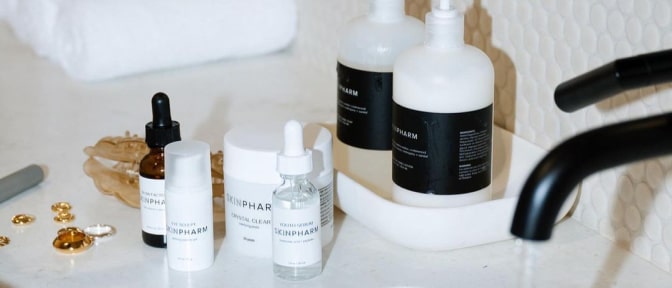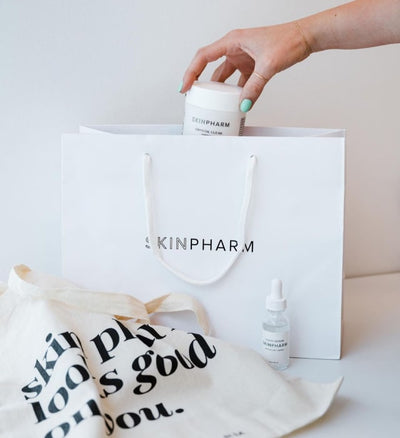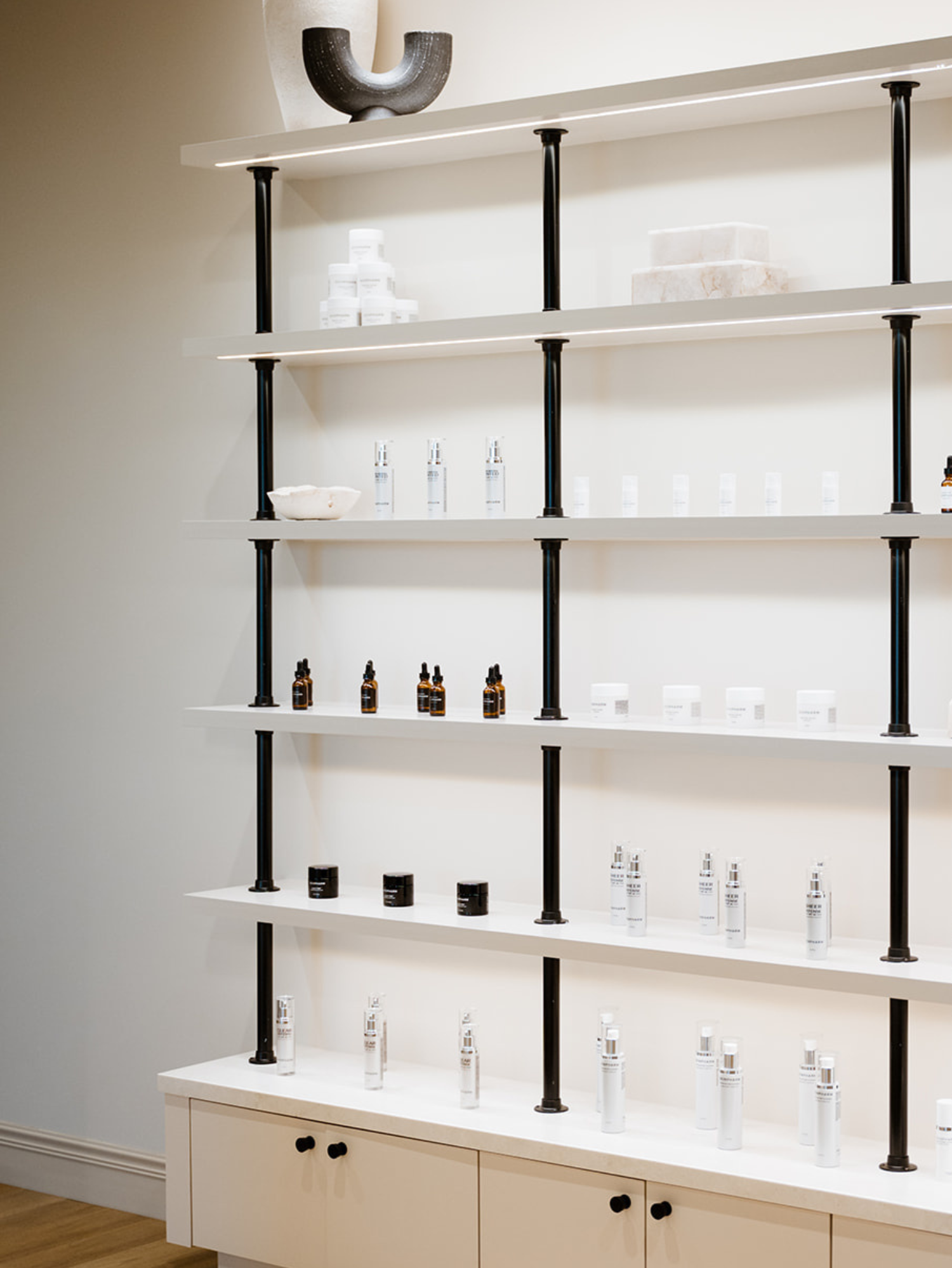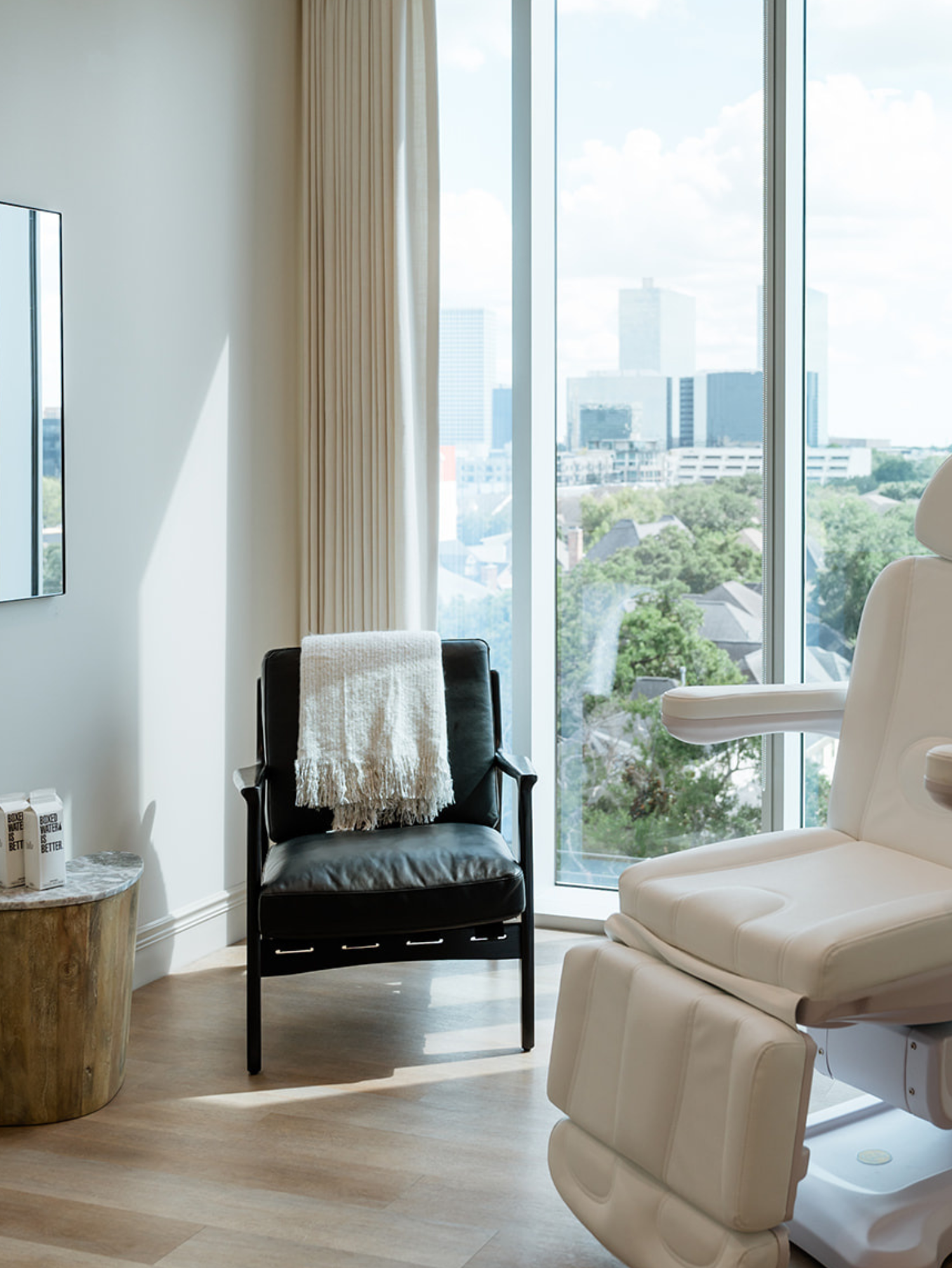Shop skin care
Clinics
VISIT OUR 9 CLINICS →
HOURS
Monday – Friday
9:30a – 5:30p
Skin Cancer Awareness: Prevention Tips from a Skin Care Expert

Of all the ways we care for our skin, protecting it from the sun is one of the most important.
This month, we’re giving you free SPF after any treatment, and there’s a reason — more than 3 million people are diagnosed with skin cancer every year. While it’s America’s most common type of cancer, it’s also preventable.
Beyond wearing daily SPF, how can we reduce our risks? We sat down with Skin Pharm Dallas provider and physician assistant Alyssa Henderson to talk prevention tips, warning signs and more.
Should I get screened for skin cancer before cosmetic treatments?
Yes! Keeping up with annual skin cancer screenings is super important if you’re getting cosmetic treatments for a couple of reasons. First, skin cancer can sometimes appear as a benign lesion, making it difficult to differentiate without appropriate testing. Second, some skin care treatments and cosmetic procedures can irritate existing skin cancer, which may lead to complications or cause the cancer to spread.
Annual skin cancer screenings ensure you identify and address potential skin cancer early, or give you peace of mind knowing your skin is cleared for future cosmetic treatments.
How can I protect my skin from harmful UV rays?
- Apply 30+ SPF broad-spectrum sunscreen to any exposed areas of skin. If you’re sweating or swimming, make sure you apply every two hours!
- Cover up with ultraviolet protection factor (UPF) clothing, which minimizes the amount of UV radiation that reaches your skin. For example, clothing with a UPF of 50 blocks 49 out of 50 or 98% of UV rays when worn. There are a variety of UPF garments out there — wide-brimmed hats, shirts, pants and even dresses!
- Polarized sunglasses are an underrated investment. The most common cancer of the eye is actually melanoma, and wearing polarized sunglasses can help decrease your risk. These also protect the skin on your eyelids — this is the thinnest skin on our bodies and is more susceptible to sun damage.
- Seek shade when you can! Avoid being in direct sunlight during peak hours (10a - 4p).
What are the different types of skin cancer, and what are their warning signs?
Basal cell carcinoma (BCC): This is the most common type of skin cancer. Typically, BCC appears as a pearly or waxy bump on the skin, sometimes with visible blood vessels. It can also manifest as a sore that doesn’t heal or repeatedly bleeds, crusts over and then reopens.
Squamous cell carcinoma (SCC): This is the second most common type of skin cancer and usually presents as a firm, red nodule on the skin, or as a flat lesion with a scaly, crusty surface. It may also be a sore that doesn’t heal or repeatedly bleeds, crusts over and then reopens.
Malignant melanoma (MM): While not the most common type of cancer, MM has the potential to be the most life threatening. A common sign is a mole that is asymmetrical or large, or that has irregular borders or a variety of colors. Cancerous moles are usually new or change in size, shape or color. They sometimes show up as dark moles on the palms or soles, or as a thick black line on the nails. This presentation is more common for those with darker skin, but may show up for anyone.
What’s the deal with tanning beds?
Studies show that people who use tanning beds before the age of 35 have a 75% higher risk of developing melanoma.
Does skin cancer prevention look different for different skin types?
It can — but everyone should perform regular self exams and see a dermatologist at least once a year. Early detection and treatment of skin cancer can greatly improve outcomes and prevent further skin damage.
Those with fair skin should wear a broad-spectrum SPF of at least 30. If your skin is very fair, you might also want to wear UPF clothing.
Those with dark skin should wear a broad-spectrum SPF of at least 15. If your skin is very dark, you should consider wearing a broad-spectrum SPF of at least 30. Darker skin has more melanin, which offers more natural sun protection — but skin cancer can still develop in areas with frequent sun exposure.
Are there benefits to combining aesthetic medicine with medical dermatology?
Combining aesthetic and medical dermatology provides a more holistic approach to skin care. Aesthetic treatments like skin procedures and injectables can address cosmetic concerns and improve the appearance of the skin, while medical dermatology can diagnose and treat underlying skin conditions, such as skin cancer or acne. This well rounded approach can lead to overall healthier skin — not only will you feel more confident in your skin, you’ll also gain the knowledge to better care for it.
Book any treatment at Skin Pharm throughout the month of May — injectables, BBL, facials and more — and get a complimentary SPF of your choice.

















